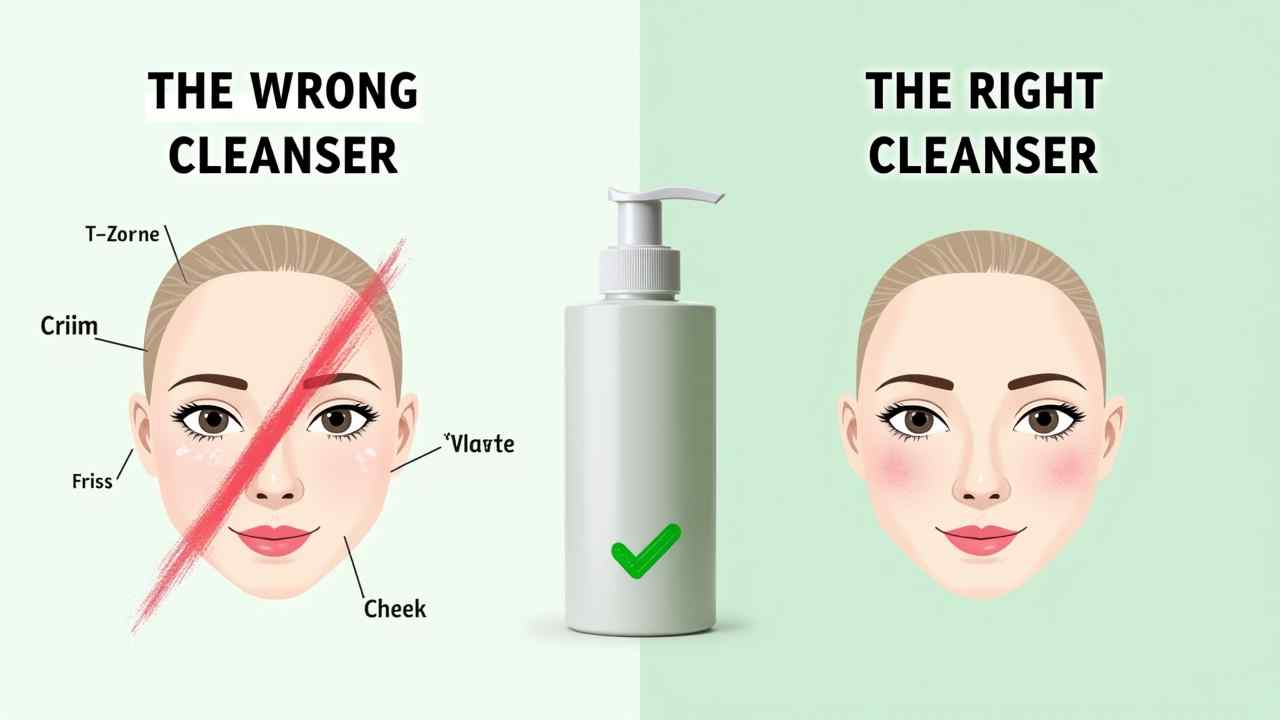
🤔 How to Pick a Cleanser for Combination Skin (A Dermatologist's Guide)
🤔 A Dermatologist's Guide on How to Pick a Cleanser for Combination Skin 🤔
Combination skin is one of the most common, and most confusing, skin types. Your T-zone (forehead, nose, and chin) is oily and prone to breakouts, while your cheeks are normal or even dry and sensitive. Finding the right products can feel like an impossible balancing act. The most important product to get right is your cleanser.
So, how do you pick a cleanser for combination skin? The wrong choice can make your T-zone even greasier and your cheeks feel tight and stripped. The right choice will leave your entire face feeling clean, comfortable, and perfectly balanced. This guide will show you exactly what to look for. ✅
- First, What is the Biggest Mistake People with Combination Skin Make?
The number one mistake is choosing a harsh, stripping cleanser designed for very oily skin. You use it with the goal of getting rid of the oil in your T-zone. However, this approach backfires badly. A harsh cleanser will strip your entire face of its natural, protective oils.
This causes two problems. It makes your dry cheeks even drier and more irritated. And it sends your oily T-zone into panic mode. The oil glands in your T-zone go into overdrive to compensate for the dryness, producing even more oil. This is the dreaded "rebound effect."
- What is the Goal of a Good Cleanser for Combination Skin?
The goal is simple: balance. You need a cleanser that is effective enough to remove excess oil and impurities from your T-zone. But it must also be gentle enough to not strip the drier areas of your face. It is a delicate but achievable balance.
- What is the Best Type of Cleanser to Choose?
The texture of your cleanser is a great indicator of whether it will work for you. For combination skin, one type of cleanser is the clear winner.
Why is a Gel Cleanser the #1 Choice?
A gel cleanser is the perfect happy medium. These lightweight cleansers are very effective at breaking down and removing excess oil. However, modern formulas are often pH-balanced and sulfate-free, which means they do so without being harsh or stripping. They provide a satisfying clean feeling without leaving your skin tight.
What about Gentle Foaming Cleansers?
A gentle foaming cleanser can also be a good option. The key is to look for one that is labeled "gentle" and is free from harsh sulfates. These will provide a light lather that cleanses effectively without over-drying.
What should you generally avoid?
For most people with combination skin, it is best to avoid very rich, creamy, or milky cleansers. These might not be effective enough to properly cleanse your oily T-zone, which could lead to clogged pores.
⭐ What Key Ingredients Should You Look For?
When you are reading the label, look for gentle, hydrating ingredients. A good cleanser for combination skin might contain:
- Gentle Surfactants: Avoid harsh sulfates like Sodium Lauryl Sulfate (SLS).
- Humectants: Ingredients like glycerin and hyaluronic acid help to hydrate the skin as you cleanse.
- Salicylic Acid (in low concentrations): A cleanser with a small amount of this BHA can be fantastic. It helps to keep the pores in your T-zone clear without being too harsh on your cheeks.
The changing weather of autumn here in Bursa can make combination skin even more unpredictable. The dry air can dehydrate your cheeks, while you might still feel oily. A good, balancing gel cleanser is the perfect foundation for a healthy autumn skincare routine. 🍂